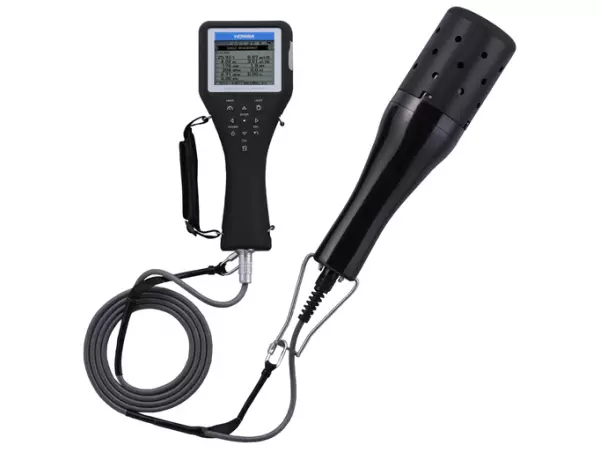In-Situ Testing Equipments

Environmental In-Situ Testing Equipment
In today’s environmentally conscious world, acquiring precise and reliable environmental data is crucial. Environmental in-situ testing equipment plays a vital role in this endeavor, providing real-time measurements directly at the sampling site. Here at DEFS, we offer a comprehensive range of professional-grade in-situ testing equipment designed to meet the demanding needs of environmental scientists, engineers, and consultants.
1. Water Quality Testing Equipment
This type of equipment is used to measure a variety of parameters in water, such as pH, conductivity, turbidity, and dissolved oxygen. In-Situ water quality testing equipment can be used to monitor the health of lakes, rivers, streams, and oceans.


2. Flame Ionization Detector (FID)
The flame ionization detector (FID) is a standard instrument used in industry for measuring hydrocarbon (HC) gas concentration such as methane (CH4), ethane (C2H6), acetylene (C2H2) etc., but its response is either poor or nil to compounds such as H2S, CCl4, or NH3. It is mass sensitive, not concentration sensitive; hence, changes in carrier gas flow rate have little effect on the detector response. It is preferred for general hydrocarbon gas analysis with varying detection ranges.
Working Procedure
The sample to be analyzed is mixed with a special burner fuel, hydrogen (H2), hydrogen plus helium (He) or hydrogen plus nitrogen (N2). Ions and electrons that were formed in the flame enter the electron gap, decrease the gap resistance and thus permit a current to flow into the external circuit. The current is proportional to the rate of ion formation which depends on the hydrocarbon concentration in the gases and is detected by a suitable electrometer and displayed on an analogue output. The FID gives a rapid, accurate and continuous reading of total HC concentration for levels as low as ppb.
3. Photo Ionization Detector (PID)
Photo Ionization Detector (PID) is the most frequently used on-site detection instrument for volatile organic compound (VOC) monitoring. PIDs offer the combination of speed of response, ease of use and maintenance, small size, and ability to detect low levels, including most volatile organic compounds (VOCs).
Working Procedure
The PID is comprised of an ultraviolet lamp that emits photons that are absorbed by the compound in an ionization chamber. Ions (atoms or molecules that have gained or lost electrons and thus have a net positive or negative charge) produced during this process are collected by electrodes. The current generated provides a measure of the analyte concentration. Because only a small fraction of the analyte molecules are actually ionized, this method is considered nondestructive, allowing it to be used in conjunction with another detector to confirm analytical results. PIDs measure organic compounds such as benzene, toluene and xylene, and also certain inorganics such as ammonia and hydrogen sulfide. As a general rule, if compounds measured or detected contain a carbon (C) atom, a PID can be used. However, such is not always the case, as methane (CH4) and carbon monoxide (Co) cannot be detected with a PID.


4. Methane Gas Detector
We provide our Methane Gas Testing by utilizing Eagle instrument which is one of the most versatile portable gas detectors on the market. Unique EAGLE features include PPM or LEL hydrocarbon detection at the push of a button; infrared sensors for CO2, methane or hydrocarbons in LEL and % volume ranges; a methane elimination switch for environmental applications, a long list of super toxic gases and measurable ranges, and dual hydrophobic filters that increases its water resistant performance. This instrument has a strong internal pump with a low flow auto shut off and alarm, which can draw samples from up to 125 feet even with the dual hydrophobic filters in place. This allows for quick response and recovery from distant sampling locations. We could continuously operate for over 30 hours on alkaline batteries or 18 hours on Ni-Cads. A variety of accessories are also available to help satisfy almost any application such as long sample hoses, special float probes for tank testing, continuous operation adapters, remote alarms and strobes, and dilution fittings, just to name a few.
5. Water Level Indicator
The Water Level Indicator provides an economical and reliable means of obtaining accurate water level data in monitoring wells and bore holes. These devices are made for drillers, consultants and hydrogeologists that are looking for an economic water level meter that does not lack in quality. These portable instruments used to accurately measure water levels. The meter detects water levels with a 5/8″ (15.8mm) O.D. stainless steel weighted probe attached to a polyethylene tape marked to 1/100 of a foot (3mm).
Contact of the electrode assembly with the water surface is indicated by an LED, and the sound of the audio alert beeper.

Contact Us Today for a Free Quote
Contact DEFS today to explore our comprehensive range of environmental in-situ testing equipment and discuss your specific requirements with our environmental experts. We’re committed to providing you with the right tools and support to ensure successful environmental monitoring projects.
